- Carry Falk, born on January 11, 1925 in Stuttgart
- Isak Löw Falk, born on June 29, 1888 in Lehrensteinsfeld
- Johanna Falk, née Ebstein on June 8, 1897 in Stuttgart
The family was interned in the castle from November 1941 to August 1942. She was deported from the Ghetto Theresienstadt concentration camp to the Auschwitz extermination camp on January 29, 1943, where she was murdered.
Contents
- 1 Ebstein – Johanna Falk’s family of origin
- 2 Johanna Ebstein and Isak Falk become a couple …
- 3 … and found a family
- 4 The economic enterprises of the Falks
- 5 Under the pressure of Nazi rule: the familydisintegrates
- 6 Johanna and Isak Falk as administrators and janitors
- 7 The stay in Weißenstein castle
- 8 Victims in the family
Ebstein – Johanna Falk’s family of origin
Samuel Ebstein, Johanna’s father came from the former Upper Silesia, namely from Dammratschhammer (Domaradz), district Oppeln, where he was born in April 1855. Probably his family later moved from the small town to Breslau. In the address book of 1877 Samuel Ebstein is listed for the first time in Stuttgart with a business address: ‘Herren- und Knabenkleidermagazin Hirschstr.14’. Presumably Samuel Ebstein, then only 22 years old, had already worked elsewhere and had saved up some capital which he could invest in his own business, after all in a very good location. In the strict sense, it was no longer the flourishing ‘Gründerzeit’ at that time, but Samuel must have found an economically favorable environment. The store locations changed in the coming decades, but were consistently located in Hirschstraße. The information in later address books indicates that Samuel Ebstein was able to acquire house property on Hirschstraße.
When he married in Schmieheim on July 7, 1881, he was probably a ‘made man’. The woman who had chosen him was Karoline (Carolina) Bernheimer, born in Schmieheim in 1857. After a ‘decent’ period of a good 10 months, daughter Lina was born in April 1882. Another seven children followed, the last being Johanna, who was born in Stuttgart on June 8, 1897. Given the family’s middle-class status, it can be assumed that the Ebstein siblings received a good education; in Johanna’s case, however, no qualifications are known.
The family history had not only happy sides: At least one sibling, Johanna’s older brother Fritz had died in 1894 when he was two and a half years old, the fate of another brother is unknown. Johanna had not experienced these cuts herself; the death of her mother in 1905 must have been a catastrophe for her. After a year of mourning, in July 1906 Samuel Ebstein married Jettel (Henriette) Ebstein, 16 years younger – whose birth name and origin from Silesia suggest that she was a distant relative. Three children were born to Samuel Ebstein’s second marriage, and two survived childhood. In about 1920 Samuel Ebstein began to retire from professional life; in his son Ludwig, born in 1887, he had found a partner and successor in the business.
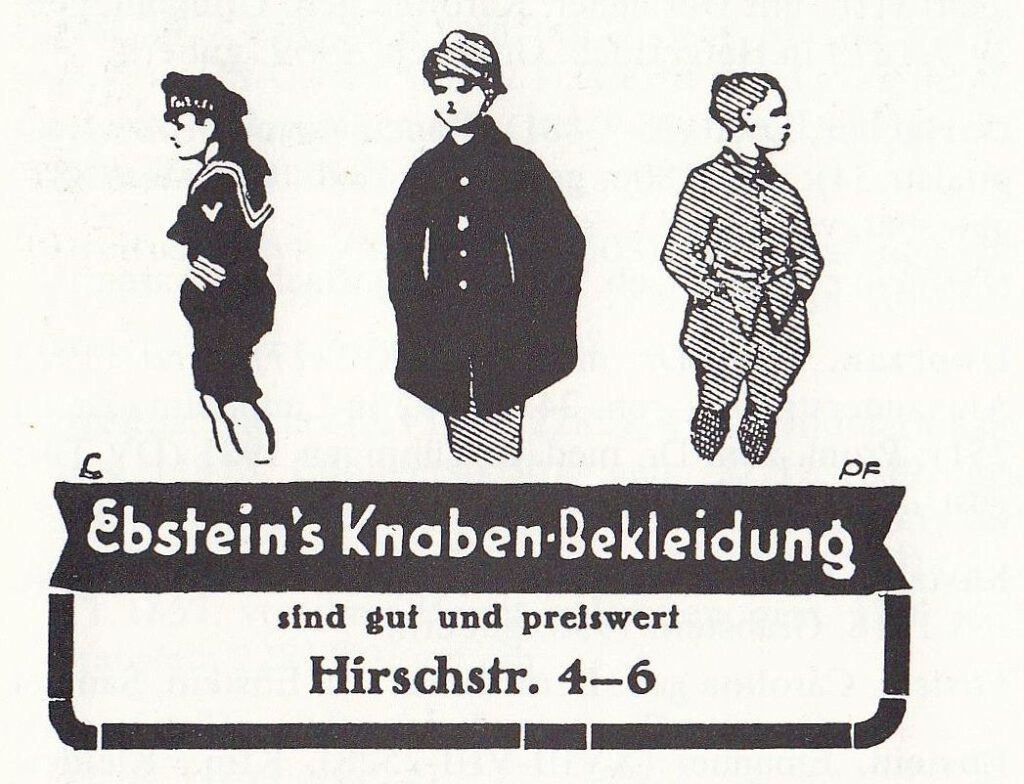
Johanna Ebstein and Isak Falk become a couple …
Isak Löw Falk, also ‘Isaak’ (he did not use his middle name ‘Löw’ when signing documents), came from the small town of Lehrensteinsfeld in the district of Heilbronn, a small town in the tradition of southern German rural Jewry, his father of the same name was active there as a ‘merchant’, his mother was Babette, née Juda. Around the year 1899 Isak became an orphan, he came to ‘pension’ with the Jakob family in Bodersweier.
After Isak’s parents died, Marx Falk, presumably a relative, took over guardianship of him. At least his parents had left him a small inheritance with which he could start in life. In the years before 1909 Isak Falk must have stayed in Strasbourg / Alsace, probably he completed his merchant apprenticeship there. In 1909 he came of age and the previous guardianship expired.
At the same time he served as a musketeer in the 2nd Company of the 87th Nassau Infantry Regiment, which was stationed in Mainz. Members of this regiment were called up for the brutal suppression of the Herero/Nama uprising in German Southwest Africa. Even though Isak Falk was most likely not among the participants due to his age, the company’s recent wartime past may have been an issue for him as well.
The following years of his life could not be documented. Presumably Isak Falk left Strasbourg after the end of the First World War, which again belonged to the French nation and where he (as not yet of age) was never officially registered. It fits in with this that Isak Falk, according to his own statement, had lived in Stuttgart since 1919. The 1920 address book contains the entry: ‘Falk u. Co. Schuhriemenkonfektion u. Anschlägerei. Isak Falk and Max Thalheimer, Olgastr 47 Eg’ as well as Isak Falk’s private address at Neckarstr. 105.
Max Tahlheimer’s stay in Stuttgart can also only be verified in the 1920 address book. The business partnership with Max Thalheimer also had private consequences for Isak Falk: Max had married Dora Ebstein on December 29, 1920: Dora, born in 1895, was Johanna’s next older sister! Sooner or later there must have been a ‘spark’ between Isak Falk and Johanna Ebstein, they got married in Stuttgart on May 11, 1922
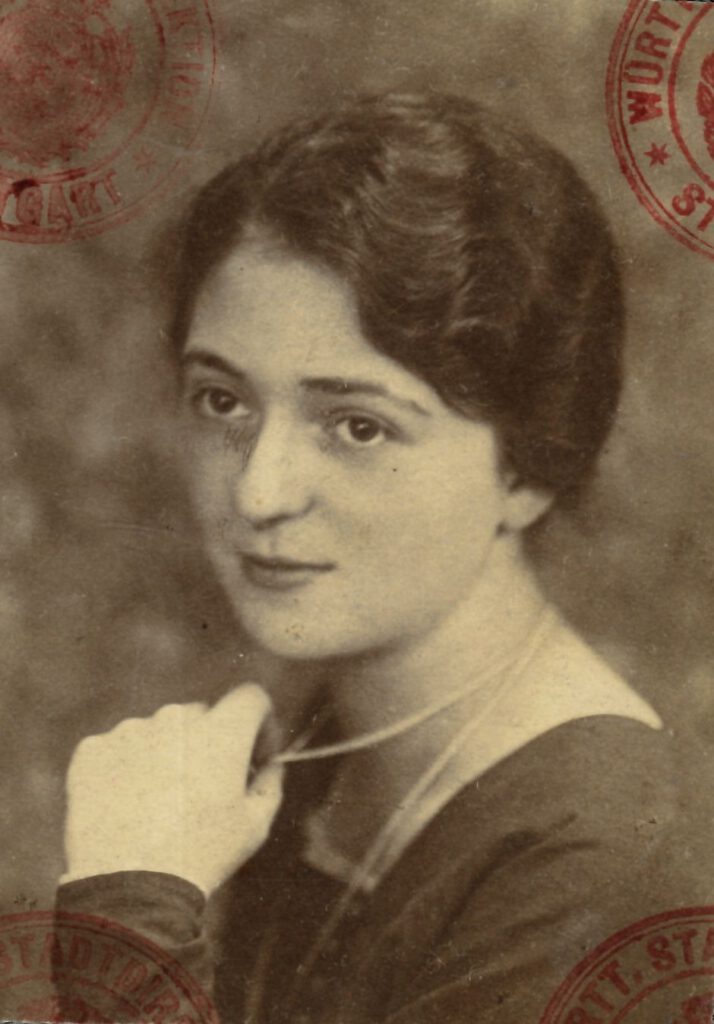
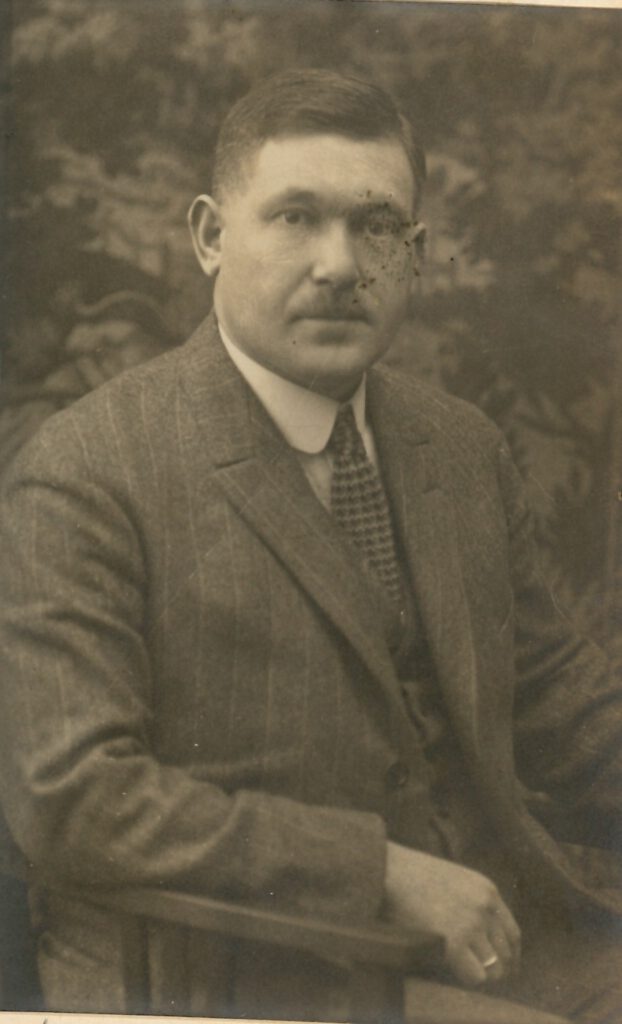
… and found a family
because on June 10, 1923 their son Fritz was born in Stuttgart, on January 11, 1925 their daughter Carry (short for Caroline) was born.
The family changed their home frequently: Neckarstr. 105 was followed in 1923 by Langestr. 59, and in 1925 by Landhausstr. 59, where the Falks remained until 1927. From 1928 to 1932 (address book entries) they lived at Urbanstr. 29, in 1933 and 1934 at Urbanstr. 82. The latter address may have been the last ‘voluntarily chosen residence’ of the Falk family, from 1935 their landlords were of Jewish origin – an indication that the Falks were ousted from apartments belonging to non-Jews. (Corresponding Nazi decrees, however, date only from 1939). The last Stuttgart residential address (1935 – 1938) is Uhlandstr. 14 A, where the family lived on the 3rd floor. House owners were: ‘Oppenheimer S. Erben’.
The economic enterprises of the Falks
The company Falk u.Co., which at first had a shoe strap confection and slinging factory’ in its assortment, changed its name in 1922 to ‘Schuhnestelfabrik’. This was also associated with a new business address at Untertürkheimerstr. 23 in Stuttgart – Wangen. Had the company started a production as well as a distribution? Just one year later, a new business address was found at Weberstr. 3. 1925 saw another new beginning: Falk u. Co. now became a ‘terry goods wholesaler’ at the same address. Two years later, the company was still called ‘Falk u. Co’, but only Isak Falk was named as the owner. The product range had also changed, Isak Falk now ran a ‘textile store’ at Landhausstr. 59. After that, there was continuity in the business, because in the address books from 1928 to 1931, Isak, very probably supported by Johanna, ran the textile store, but at the address Urbanstraße 29, which was also the family’s home address. The former partner Max Thalheimer was also listed privately for the last time in Stuttgart in 1927, because the Thalheimer family moved to Tübingen. Max Thalheimer became sales manager at the Württemberg terry weaving mill in Tübingen-Lustnau.
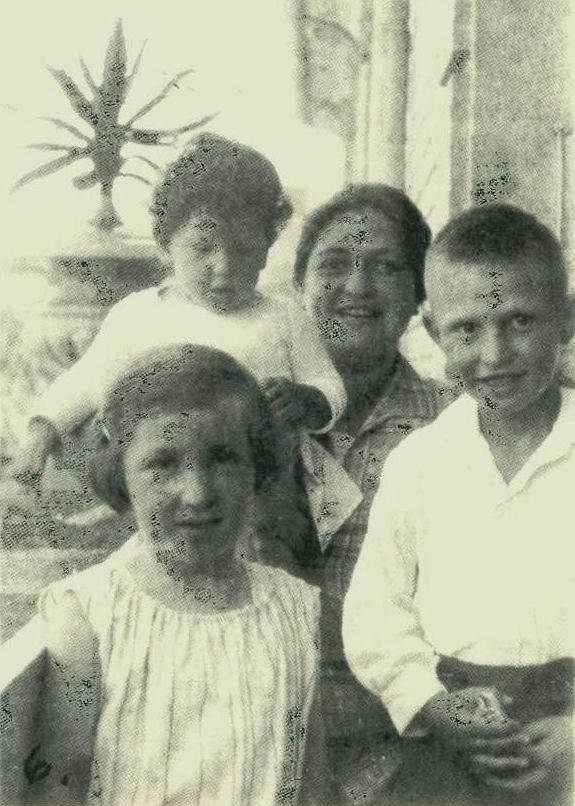
Ten very changeable years characterize Isak Falk’s entrepreneurial activity, which is to be understood against the crisis-ridden background in the period after the First World War. In 1932, Isak and Johanna looked for a new field of activity that would last longer – despite the Nazi boycott calls and actions against ‘Jewish’ businesses that soon followed: Isak and Johanna set up a laundry on the first floor of Ulrichstr. 1, where it remained until 1938. The laundry was moved to Rote Str. 39 in 1939, again, as with the private address, this can be understood as a consequence of the Nazi – decrees. In later documents Johanna Falk is referred to as ‘washerwoman’, Isak as ‘washer’.
Under the pressure of Nazi rule: the family
disintegrates
On the pogrom night of November 9-10, 1938, Isak Falk apparently escaped arrest; however, the Falks will have abandoned their laundry business after the pogrom night. At the beginning of December 1938, the decree on the forced sale of ‘Jewish’ commercial enterprises, stores, etc. is issued. The Jewish owners almost always receive only proceeds of sale below value; moreover, the proceeds must be paid into a blocked account.
Another Nazi decree, namely the one of November 15, 1938, affected the children of the Falk family: All ‘Jewish’ schoolchildren had to leave the public schools and were forced to switch to schools run by Jewish sponsors. In Stuttgart, a Jewish general education school had already existed since April 1935, but there is no indication that Fritz or Carry Falk attended it. Carry, however, was proven to have gone to the Jewish boarding school ‘Wilhelmspflege’ in Esslingen in 1939, which had been founded as an orphanage. This institution, its students and teachers had been attacked by a Nazi mob during the Pogrom Night, could not be reopened until February 1939. Carry’s stay, however, can only have lasted until the end of August 1939, when the Nazi administration forced the final end of this Jewish school rich in tradition. Where Carry lived until her parents returned to Stuttgart in November 1940 must remain open.
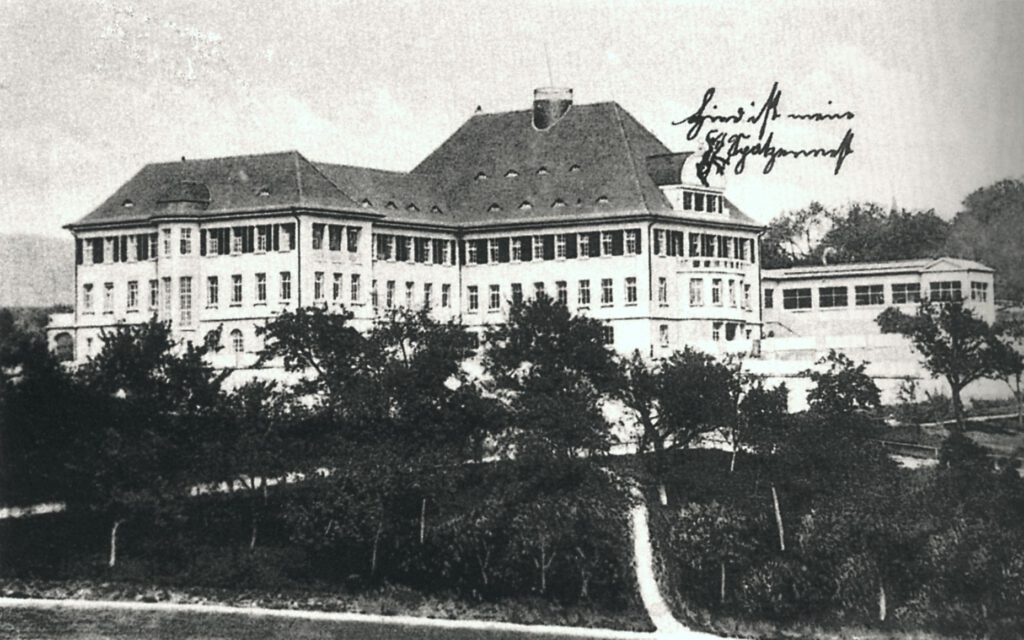
Fritz had already left Stuttgart at the beginning of April 1938: He moved to Ahlem near Hanover and became a student at the Jewish horticultural school, which was also rich in tradition. Since 1933, the school’s primary goal had been to prepare students for emigration to Palestine. Fritz left the school at the end of March 1941, returned to Stuttgart, but did not live with his parents. His deregistration address, recorded in Ahlem, was Stuttgart’s Werfmershalde 12, in 1941 a ‘Judenhaus’, which also became a site of resistance. A comparison of the rental lots in the address books 1940 and 1941 shows what was expected of the forcibly admitted people. In the first year, including the house owner, four residential lots were registered, in the following year there were 14 addresses: Whereby only the ‘head of household’ was registered in each case! The reason why Fritz moved into this ‘Jewish house’ was probably that relatives lived there: His grandfather Samuel Ebstein had been able to live with his second wife Henriette under pleasant conditions in Hoferstr. 10 until 1940, in the address book of 1941 his name appears in Werfmershalde 12. In this dreary environment Samuel Ebstein died at the age of 86 on October 2, 1941. The Guggenheim couple also belonged to the relatives in the house. Alexandrine Guggenheim, née Ebstein was a half-sister of Johanna Falk. The 29 – year old was married to Ferdinand Guggenheim and was expecting their first child. Ury Guggenheim was born on September 24, 1941, a few days before his grandfather died in the squalor of the Werfmershalde.
Johanna and Isak Falk as administrators and janitors
The fact that Carry Falk attended the boarding school ‘Wilhelmspflege’ from the beginning of 1939 also had to do with the fact that her parents had to look for a new job. They found it in Sontheim near Heilbronn, where in 1895 the ‘Israelite Asylum for single men and women’ had been founded, a new building was inaugurated in 1907 and named ‘Wilhelmspflege’ after the then king of Württemberg. Initially a comfortable facility with good care for the residents, the operators were forced to take in more and more elderly Jewish people during the Nazi era. An excerpt from the Sontheim wage tax card shows that Isak ‘Israel’ Falk and Johanna ‘Sara’ Falk had moved from Stuttgart to Sontheim, Raiffeisenstr. 13 on April 14, 1939. The occupation listed for Isak Falk is ‘washer’. Since neither Johanna nor Isak had reached retirement age, it is very likely that they were able to work in property management at the Sontheim retirement home. Their professional experience as long-time operators of a laundry probably helped them to do so. Their stay in Sontheim lasted until November 23, 1940, at which time the Jewish old people’s home was closed by order of the Nazi authorities and the residents were sent to their home communities. Although Isak Falk is not mentioned in the Stuttgart address books of 1940 and 41, there is a hint that Carry, Johanna and Isak Falk were able to find shelter again in Uhlandstr.14 A. What did the family live on after they returned to Stuttgart? After an unexplained year in Stuttgart, at the end of 1941 the Falks had another opportunity to work, following on from their work in the Sontheim old people’s home: Johanna and Isak Falk were appointed as administrators and janitors for the newly established Jewish forced residence in Schloss Weißenstein / district of Göppingen, and their 16-year-old daughter Carry was ‘allowed’ to accompany them, probably with the proviso that she would work there herself.
The stay in Weißenstein castle
It was probably November 1, 1941, when the first group of 44 Jews was quartered in Schloss Weißenstein. Forty-two of them came from Stuttgart, including Carry, Johanna and Isak Falk, who had to leave their previous apartment at Uhlandstr. 14. The Falk couple, however, had a different status than the other newcomers:
When the history of the forced residence was reconstructed after the end of the war, the Commissariat Göppingen of the Württemberg State Police wrote on 12.11.1948 to the public prosecutor’s office in Ulm in the writing style of the recent past:
“Only the Jew Falk and his wife, who was regarded as janitor and confidant to the authorities, were allowed to move about freely. He was also responsible for the entire care of the Jews there. He procured the ration cards from the offices for food, etc., while his wife worked with the respective workers. While his wife provided meals in her own kitchen with the help of the Jews.”
In Sofie Kroner’s letter of 14.11.1941, addressed to her daughter Nelly in the USA, Johanna Falk was mentioned as the authoritative person ‘in the house’.
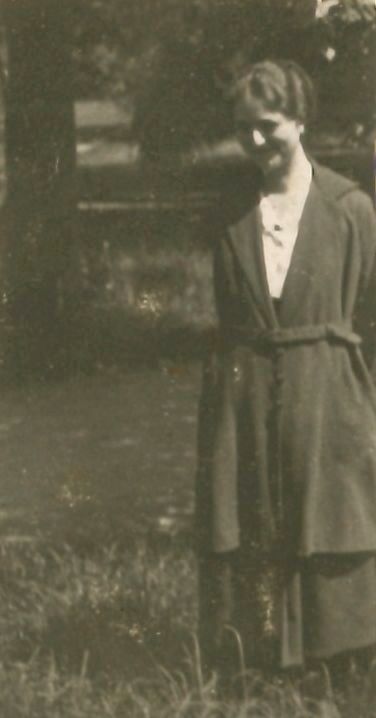
Johanna must have found the ‘right tone’ to make life seem easier for the residents. Sofie Kroner, for example, was pleased: ” I have already furnished my little corner quite nicely, as the manageress Mrs. Falk – formerly of the laundry in Stuttgart, just praised me very much.” 16 of the 60 residents of the castle, including the Falk family, remained in the compulsory dormitory during the entire period of its existence. It can be assumed that for these 13 people the Falk family became more than a team that stood up for (as much as possible) good care. Conversely, the Falk family may have developed a sense of responsibility, so towards the many elderly in this group. The Falk family will have experienced their helplessness in the face of the deportations to Riga in 1941 and Izbica in April 1942. None of the 27 deported people ever showed any sign of life to the remaining occupants of the castle. On August 20, 1942, the castle was evacuated, and the Falk family and the other inmates were first taken to the collection camp on Killesberg in Stuttgart. On August 22, the ‘Reichsbahn – Sonderzug’ (special train) left Stuttgart for Bauschowitz, the closest train station to the concentration camp Theresienstadt. Carry, Johanna and Isak Falk lived in the Theresienstadt concentration camp ghetto until January 29, 1943, when they were transferred to the Auschwitz death camp and murdered by the German Nazis. Carry Falk had celebrated her 18th birthday a few days earlier.
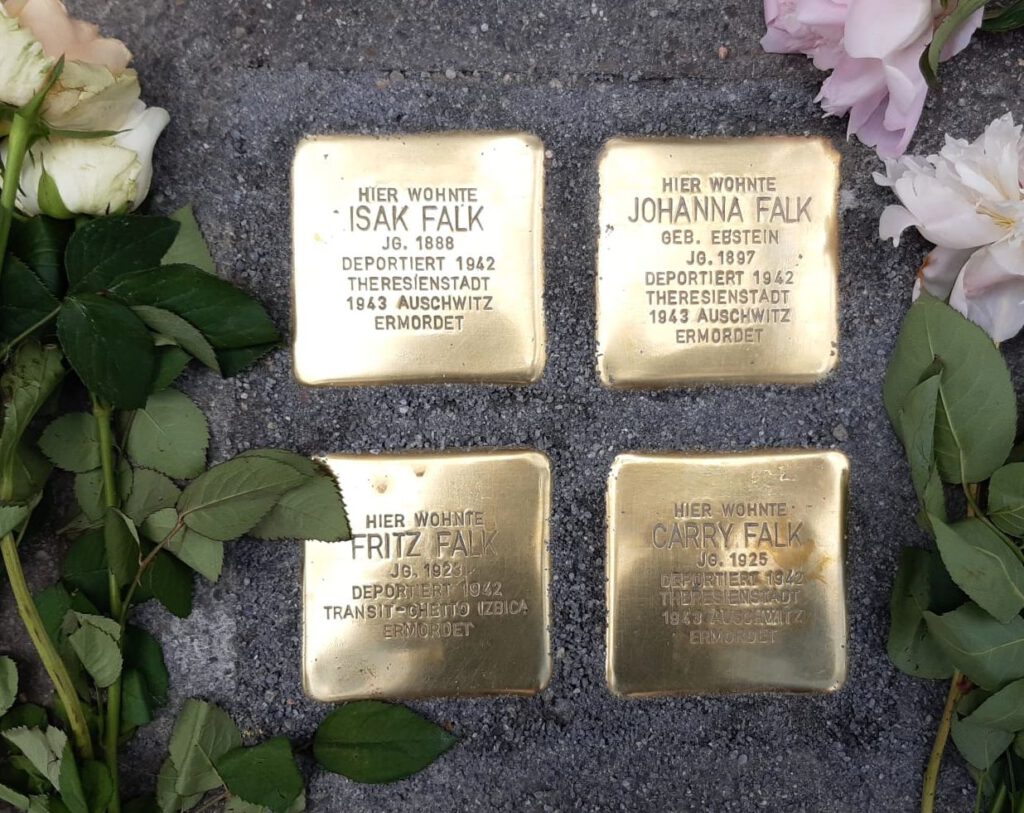
On May 16, 2024, Gunter Demnig laid four Stolpersteine in front of the house at Uhlandstr. 14a in Stuttgart, where the Falk family had lived for some time.
Victims in the family
The actual family, of course, included Fritz Falk, who had returned to Stuttgart in 1941. Was he able to visit his parents and his sister once again in Weißenstein? Where did he live until his deportation to the Izbica ghetto on April 26, 1942? The Stuttgart address book of 1942 shows that all Jewish residents had to leave the ‘Judenhaus’ Werfmershalde 12. In addition to Fritz, this also applied to the young Guggenheim family. They were Johanna’s half-sister Alexandrine, née Ebstein, her husband Ferdinand and their little son Ury. The young family was also taken to Izbica and subsequently murdered in one of the extermination camps located on one of the outgoing railroad lines. Fritz’s cousin Ury Guggenheim was just 7 months old at the time. Since 2009 there are stumbling stones for the Guggenheim family in Pfalzstr. 36 in Stuttgart – Bad Cannstatt. Ury’s grandmother Henriette (Jettel) Ebstein, who had also been imprisoned in the Werfmershalde, was taken from Stuttgart to the concentration camp Theresienstadt on August 22, 1942. With great luck, Johanna’s stepmother survived the concentration camp. Was Johanna able to take care of her stepmother in Theresienstadt?
In addition to Alexandrine Guggenheim, Johanna’s oldest sister Lina, who had married her cousin Julius Ebstein, also fell victim to the Nazi Germans’ hatred of Jews. Lina Ebstein, born in 1882, lived as a widow in Pforzheim and was deported to the Gurs camp in southwest France as early as October 1940.
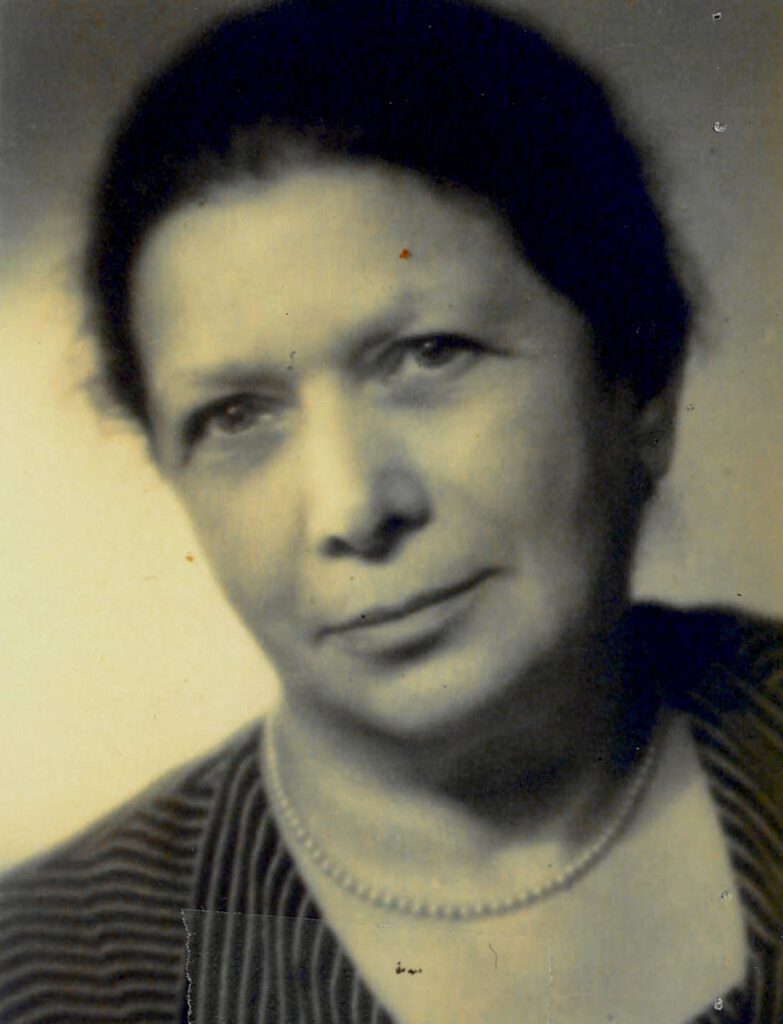
From the collection camp Drancy near Paris she was deported to the extermination camp Auschwitz in August 1942. In memory of her, a Stolperstein was laid in Pforzheim in 2012.
(17.05.2024 kmr/ww)

